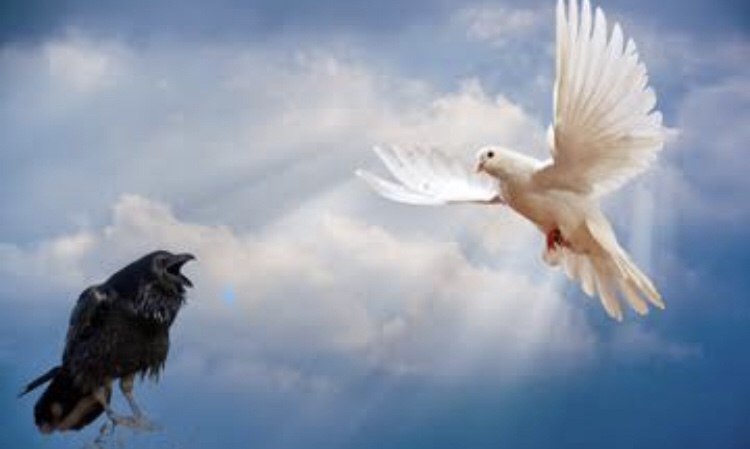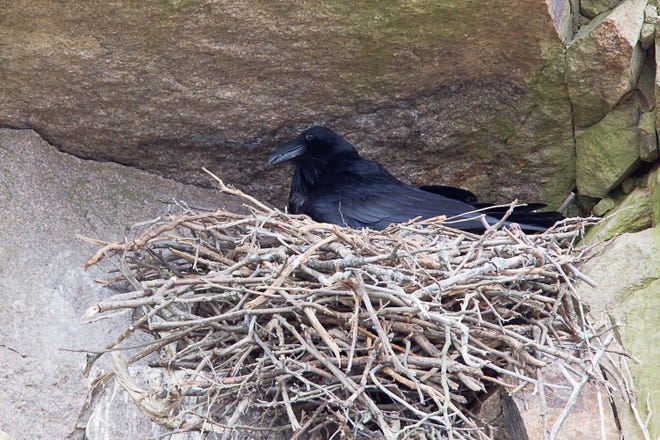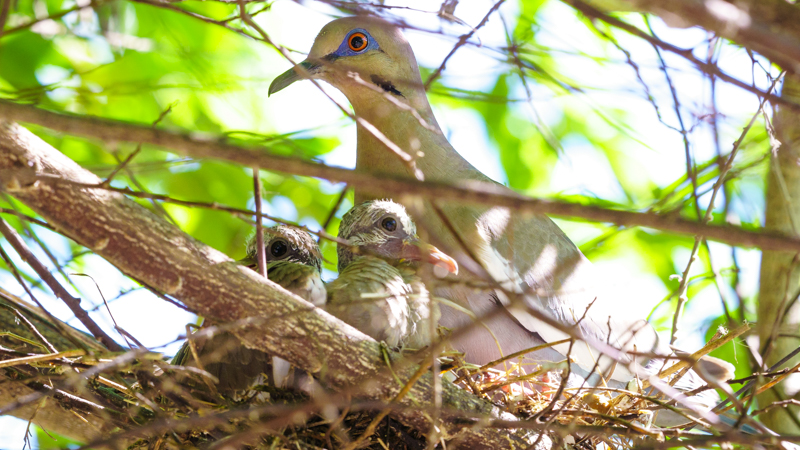At the end of forty days Noah opened the window of the ark that he had made and sent forth a raven. It went to and fro until the waters were dried up from the earth. Then he sent forth a dove from him, to see if the waters had subsided from the face of the ground. But the dove found no place to set her foot, and she returned to him to the ark, for the waters were still on the face of the whole earth. So he put out his hand and took her and brought her into the ark with him. 10 He waited another seven days, and again he sent forth the dove out of the ark. And the dove came back to him in the evening, and behold, in her mouth was a freshly plucked olive leaf. So Noah knew that the waters had subsided from the earth. Then he waited another seven days and sent forth the dove, and she did not return to him anymore.
Genesis 8:6-12

My family and I lived in Wasilla, AK for nearly four years. During that time we got to experience the wonder of nature in all its glory as we would see moose and bear and all kinds of other animals that were not common to our Texas – Louisiana upbringings. But one animal we experienced on a regular basis was a particular nuisance – the common raven.
The ravens of Alaska are rather large birds, given their need for preserving body heat, especially in the winter months and they tend to gather in flocks. However, they are very competitive carrion birds – subsisting on the carcasses of dead animals. They have a similar diet to that of vultures and buzzards. They are not natural hunters, but they are definitely opportunistic animals.

Another interesting fact about ravens is they are not picky about where they build their nest. Raven nests can be found in the crags of mountains, high trees, electrical poles, cell phone towers, billboards, bridges, etc. Any indiscriminate place they can find space to build. After nesting, eggs are incubated for up to 25 days and once they hatch, the nestlings will remain for about a month and a half before being forced out of the nest to fly on their own.
Doves, on the other hand, are quite the opposite. The typical common dove will build its nest on the ground in fields. If the ground is insufficient, then they will build a nest in low tree brances, bushes, vines, and sometimes even cacti. The incubation period for doves is 2 weeks and nestling is another 2 weeks once the chicks are hatched.

The difference between the typical raven habitat and the habitat of the dove is critical to understanding why Noah sent out a raven first and then switched to a dove. Noah sent out the raven first and it went back and forth until there was enough dry ground to build its own nest. Likely not far away and overlooking the devastation wrought by the flood.
The dove on the other hand went out three times in search of lower ground suitable for its own habitat. Eventually it came back with the branch of an olive tree, indicating that lower ground was dry enough for vegetation to begin to bloom forth and the dove and other low land herbivores would have food to eat. The dove would have a place to nest and propagate and call home.
The difference between the raven and the dove is that the opportunistic raven never came back to let Noah know that dry ground was available. The raven was content in his solitude on top of the mountain overlooking the destruction. The dove was patient and returned to the safety of the ark until the habitat was fit for growth and habitation. And unlike the raven who simply abandoned the ark with no sign to Noah and his family apart from his absence, the dove returned announcing that all is safe for them to venture forth into the world together.
And the question that I pose today is this: are you the raven, content in your solitude? Do you find yourself overlooking the destruction of life around you and opportunistically swoop in to scoop up and devour the scraps of discarded life? Or are you the dove, patiently awaiting a more appropriate habitat in which to operate and fulfill the command that God has given to be fruitful and multiply in a manner that is attentive to God’s provision for your obedience?
We tend to see the symbolism of the dove and the olive branch as a representation of peace following turmoil. And there is some truth to this. However, more accurately when contrasted against the raven, we find that the dove is a symbol of patient resilience, willing to wait until God’s perfect timing to venture forth in obedience.
Sometimes when we sense God’s calling on our lives we get excited and want to rush headlong into the battle, often unprepared for the challenges that lay ahead. When this happens, we find ourselves tired, frustrated, and burned out, wondering if God had abandoned us. Wisdom, however, dictates that God’s calling sometimes requires us to stop and survey the terrain ahead before venturing out when the time is ripe and God has provided for the success of His mission. It means venturing out to see what lies ahead and then when the territory isn’t ready, we return home to rest again in the comfort of the ark – in this example, our local congregations that provide support and sustenance in the interim to prepare us for the journey ahead.
What is God calling you to do in your life today? Is he calling you to be on mission with Him to the nations? Is He calling you to make a career change? Perhaps He is simply calling you home to the ark to rest and grow and prepare for the challenges that life will bestow upon you. Sin leaves a terrain of wanton destruction in its wake. I implore you not to be the raven, striking out too soon and making your nest among the destruction. Be the dove and wait and grow until the time is right before you strike out.